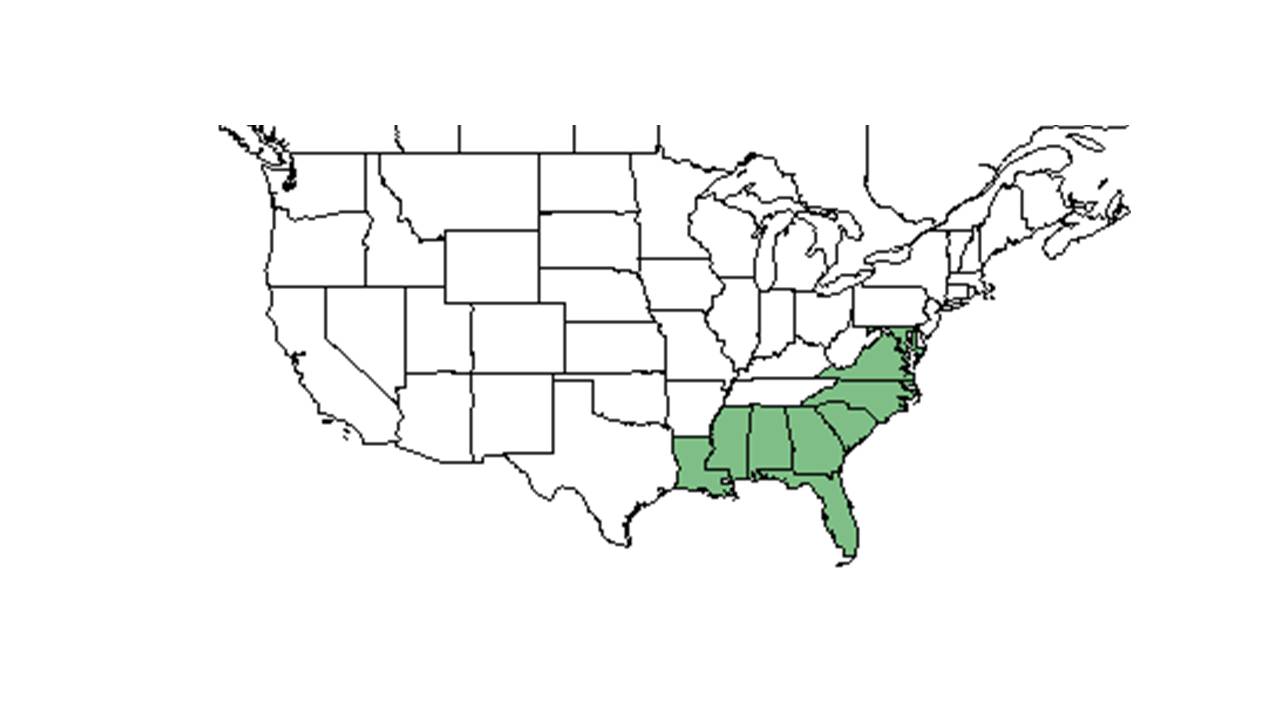Desmodium tenuifolium
| Desmodium tenuifolium | |
|---|---|
Error creating thumbnail: Unable to save thumbnail to destination
| |
| Scientific classification | |
| Kingdom: | Plantae |
| Division: | Magnoliophyta - Flowering plants |
| Class: | Magnoliopsida – Dicotyledons |
| Order: | Fabales |
| Family: | Fabaceae ⁄ Leguminosae |
| Genus: | Desmodium |
| Species: | D. tenuifolium |
| Binomial name | |
| Desmodium tenuifolium Torr. & A. Gray | |

| |
| Natural range of Desmodium tenuifolium from USDA NRCS Plants Database. | |
Common name: slimleaf ticktrefoil
Contents
Taxonomic notes
Description
Generally, for Desmodium genus, they are "annual or perennial herbs, shrubs or small trees. Leaves 1-5 foliolate, pinnately 3-foliolate in ours or rarely the uppermost or lowermost 1-foliolate; leaflets entire, usually stipellate; stipules caduceus to persistent, ovate to subulate, foliaceous to setaceous, often striate. Inflorescence terminal and from the upper axils, paniculate or occasionally racemose; pedicel of each papilionaceous flower subtended by a secondary bract or bractlet, the cluster of 1-few flowers subtended by a primary bract. Calyx slightly to conspicuously 2-lipped, the upper lip scarcely bifid, the lower lip 3-dentate; petals pink, roseate, purple, bluish or white; stamens monadelphous or more commonly diadelphous and then 9 and 1. Legume a stipitate loment, the segments 2-many or rarely solitary, usually flattened and densely uncinated-pubescent, separating into 1-seeded, indehiscent segments." - Radford et al 1964.
Specifically, for D. tenuifolium species, they are "erect, perennial herb; stems 0.5-1.2 m tall, densely but inconspicuously uncinulate-puberulent and sparsely uncinlate-pubescent, often becoming glabrate below. Terminal leaflets very narrowly linear, often 8-15 X as long as wide (2.5) 4-8 cm long, 3-8 mm wide, glabrous to minutely puberulent above, sparsely short-pubescent beneath, especially along the veins, noticeable reticulate; stipules linear to linear-subulate, 2-5 mm long; stipels persistent. Inflorescence usually paniculate; pedicels 4-10 mm long. Calyx densely puberulent and sparsely short-pubescent; petals pinkish to purplish, 4-5 mm long; stamens diadelphous. Loment of 1-3 suborbicular to subelliptic segments, each 3.5-5 mm long, 2.5-3.5 mm broad, upper suture of each segment bowing outward, uncinulate-puberulent on both sides and sutures; stipe 1-2 mm long, slightly shorter to barely exceeding the calyx and shorter than the stamina remnants." - Radford et al 1964.
Distribution
Ecology
Habitat
D. tenuifolium is found in mesic and dry type savanna in North Carolina. Mesic savannas in North Carolina consist exclusively of Pinus palustris. Dry savannas in North Carolina typically occur on the high, central portion of the more dome-shaped islands, or where the soil is coarse textured and well drained. These habitat types require frequent burns.[1]
This species is also found in wiregrass savannas, mesic woodlands, flatwoods, pond margins, and longleaf pine forests (FSU Herbarium). It also occurs in disturbed areas such as roadsides and clear-cuts (FSU Herbarium). It generally prefers semi-shaded habitats with dry to moist sandy soils, including loamy sand, sand, and sandy peat (FSU Herbarium).
Associated species include wiregrass, slash pine, saw palmetto, longleaf pine (FSU Herbarium).
Phenology
Flowering has been observed in September and October, and fruiting has been observed in July, September, October, and November (FSU Herbarium).
Seed dispersal
Seed bank and germination
Fire ecology
This species is found in savannas that are frequently burned[1]
Pollination
Use by animals
Diseases and parasites
Conservation and Management
Cultivation and restoration
Photo Gallery
References and notes
Florida State University Robert K. Godfrey Herbarium database. URL: http://herbarium.bio.fsu.edu. Last accessed: June 2014. Collectors: Loran C. Anderson, J.P. Gillespie, R.K. Godfrey, R. Komarek, R. Kral, Robert L. Lazor, S.W. Leonard, and John Morrill. States and Counties: Florida: Bay, Franklin, Jefferson, Liberty, Madison, and Wakulla. Georgia: Baker, Decatur, and Thomas. North Carolina: Harnett. Alabama: Covington.
Radford, Albert E., Harry E. Ahles, and C. Ritchie Bell. Manual of the Vascular Flora of the Carolinas. 1964, 1968. The University of North Carolina Press. 604-8. Print.